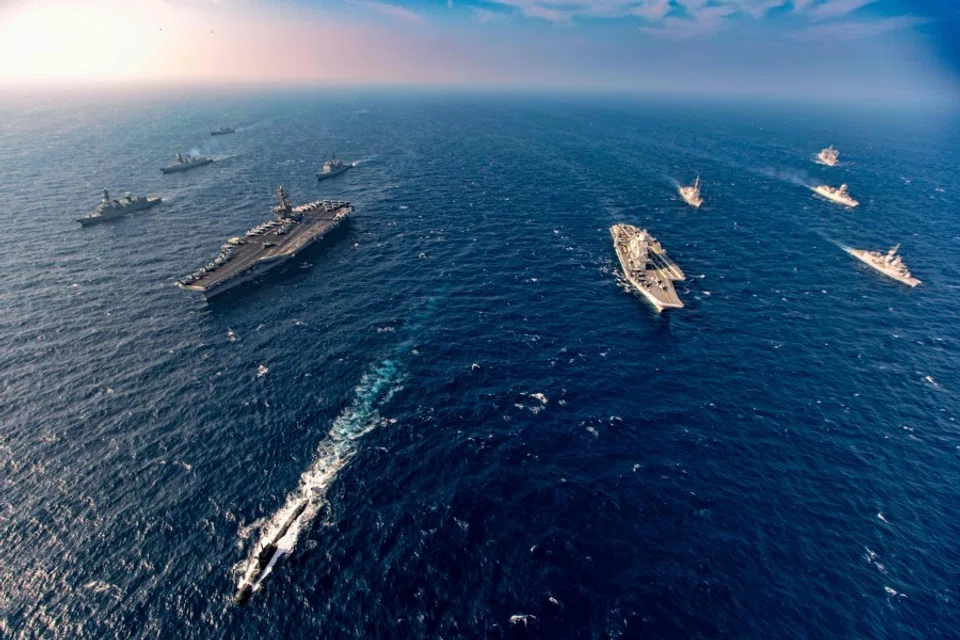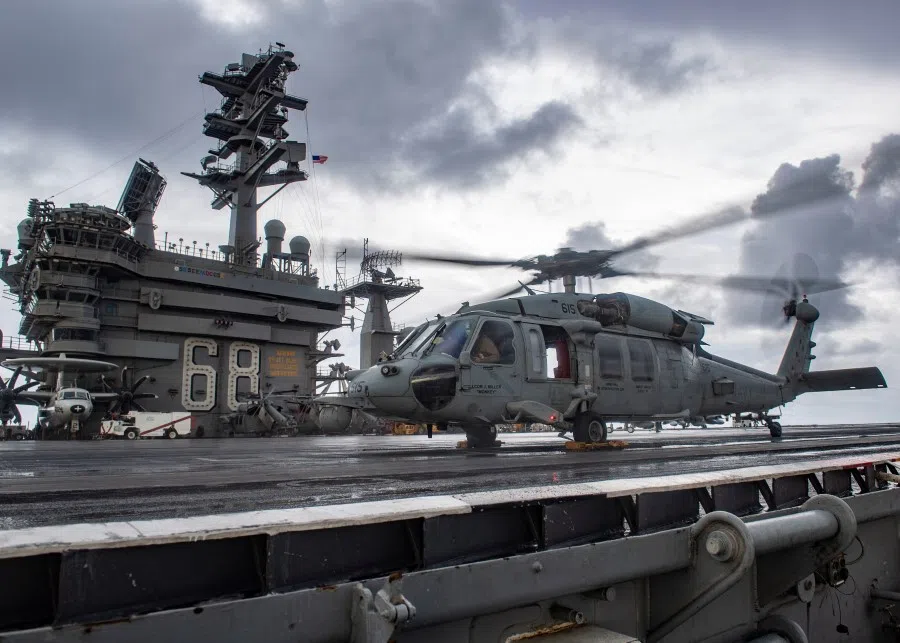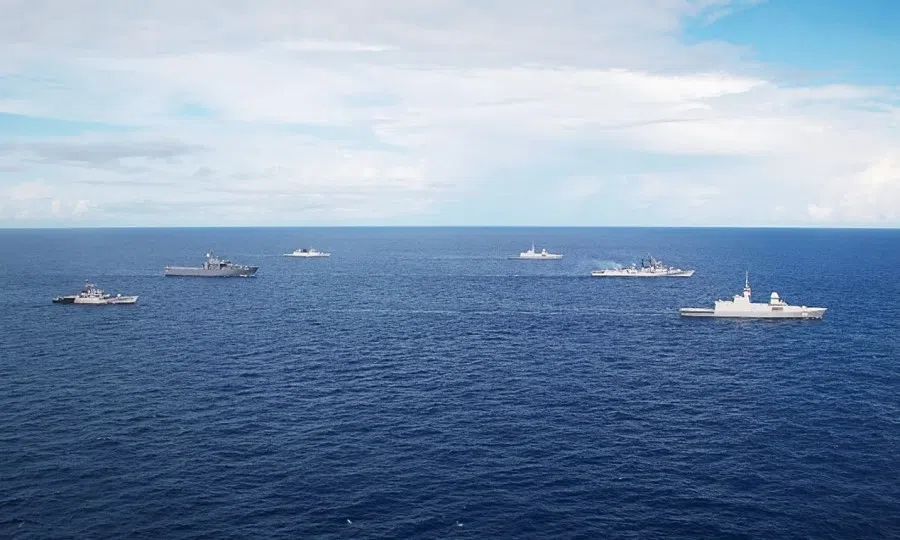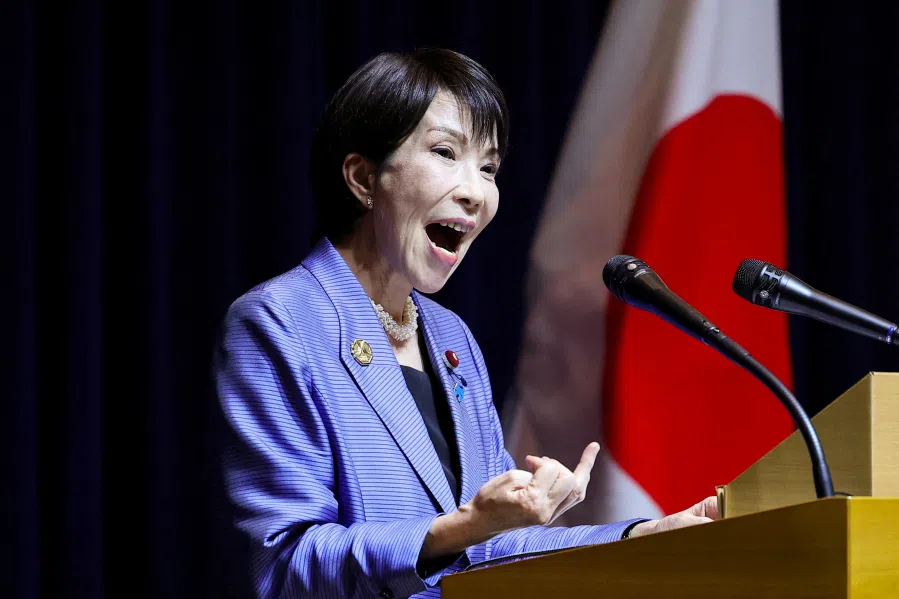US Navy's 1st Fleet to sail the 'Western Pacific and the Eastern Indian Ocean'?
The US has raised the possibility of reactivating its 1st Fleet in the Indo Pacific area. ISEAS academic Ian Storey notes that a reactivated 1st Fleet would boost the US naval presence in Asia, and demands on America's allies and security partners in this region. What are the points of consideration for Asian countries and what is the likelihood that the reactivation will happen?

Last week, US Navy Secretary Kenneth Braithwaite told the Senate Armed Services subcommittee that the decision had been taken to reactivate the 1st Fleet to strengthen America's military presence in the Indo-Pacific.
According to Braithwaite, "This will reassure our allies and partners of our presence and commitment to this region, while ensuring any potential adversary knows we are committed to global presence to ensure rule of law and freedom of the seas."
The Secretary's initiative raised both questions and eyebrows.
Braithwaite's rationale for reactivating the 1st Fleet is that the 7th Fleet is overstretched due to its huge geographical area of responsibility and, more importantly, the growing presence of the Chinese navy and the challenges it poses to US security interests in the Western Pacific.
The US Navy currently has seven active fleets. The 10th Fleet is a cyber command and does not operate any warships. The 4th fleet, which covers South America, has no vessels permanently assigned to it. The 5th Fleet operates in the Middle East, the 6th Fleet in Europe and Africa and the 2nd Fleet (reactivated in 2018 to face a resurgent Russia) in the North Atlantic and Arctic.

Operational responsibility for the Pacific currently is divided between the San Diego-based 3rd Fleet (from the US West Coast to the International Date Line) and the Japan-based 7th Fleet (from Hawaii to the Indian Ocean). The 1st Fleet was activated in 1947 but was re-designated as the 3rd Fleet in 1973.
Braithwaite's rationale for reactivating the 1st Fleet is that the 7th Fleet is overstretched due to its huge geographical area of responsibility and, more importantly, the growing presence of the Chinese navy and the challenges it poses to US security interests in the Western Pacific.
Although some warships from the 3rd Fleet were forward deployed for a few years to help alleviate the 7th Fleet's burden, that arrangement has now ended. The relentless pace of 7th Fleet operations contributed to a series of fatal accidents in Southeast Asia.
Braithwaite first raised the 1st Fleet proposal in November. In a speech at a naval conference in the US, he said that the navy was considering establishing a new fleet at the "crossroads" of the Indian and Pacific Oceans and that the US looked to "allies and partners" such as Singapore and India to help achieve that goal.
Regional analysts were agog. Had the proposal been discussed during Braithwaite's visit to Singapore in October? In response to media queries, MINDEF said that while Singapore had agreed to a US request in 2012 to deploy up to four littoral combat ships on a rotational basis, "no further requests or discussions" with the US Department of Defense on additional deployments had taken place.

In an interview a few days later, Braithwaite rowed back on his earlier speech. Although he stated that it would be wise to "position a new numbered fleet somewhere towards the western-southern borders of the Pacific Ocean", he refrained from mentioning a specific country and instead emphasised the expeditionary nature of the proposed fleet.
Before agreeing to a larger US naval presence, Singapore would have to consider the strategic sensitivities of its immediate neighbours - especially Indonesia and Malaysia - as well as China.
In his testimony before the Senate last week, Braithwaite elaborated further. He said the 1st Fleet's primary area of responsibility would be the "Western Pacific and the Eastern Indian Ocean" and confirmed that, at least at first, it would be an expeditionary fleet "without a land-based headquarters".
This takes the pressure off countries like Singapore and India to host the new US fleet. Before agreeing to a larger US naval presence, Singapore would have to consider the strategic sensitivities of its immediate neighbours - especially Indonesia and Malaysia - as well as China. Unsurprisingly, Chinese military analysts reacted with consternation at Braithwaite's comments, with one declaring that setting up a fleet near the Straits of Malacca would be "akin to grabbing China by the throat".

As for India, it is unclear whether it would be ready to take the giant step of hosting the 1st Fleet, say at Port Blair in the Andaman and Nicobar Islands close to the Straits of Malacca.
After the violent Sino-Indian border clashes in June and the increase in Chinese naval activities in the Indian Ocean, perhaps it is. Braithwaite will soon find out when he travels to India to discuss how the two countries can strengthen naval cooperation.
Clearly, Braithwaite's initiative is still at the planning phase. Crucially, it is unclear where the ships for the 1st Fleet will come from. America does not have the funds or the industrial capacity to produce warships quickly and in large numbers. Transferring ships from the 3rd and 7th Fleets is a possibility, but that would not relieve the burdens on those fleets which would still have to cover the same geographical areas with the same number of ships.
A more considered proposal, developed in consultation with America's Indo-Pacific partners, will have to wait until President-elect Joe Biden takes office in January 2021.
But given that Biden has already spoken of the need to do more with friends and allies to meet the perceived challenges posed by China, an expeditionary 1st Fleet regularly calling in at ports in Southeast Asia, India and Australia could well become a reality soon.
This article was first published by ISEAS - Yusof Ishak Institute as Fulcrum Commentary 2020/204 "America's Proposed Reactivation of the 1st Fleet Raises Eyebrows and Questions" by Ian Storey.
Related: A Biden presidency: Revenge of the 'Asia-Pacific' over the 'Indo-Pacific'? | India in the Indo-Pacific: Reining in China in the new theatre of great power rivalry | South Korea and America's Indo-Pacific strategy: Yes, but not quite | Targeting China, Japan's Indo-Pacific strategy in Southeast Asia runs into headwinds?





![[Big read] China’s 10 trillion RMB debt clean-up falls short](https://cassette.sphdigital.com.sg/image/thinkchina/d08cfc72b13782693c25f2fcbf886fa7673723efca260881e7086211b082e66c)